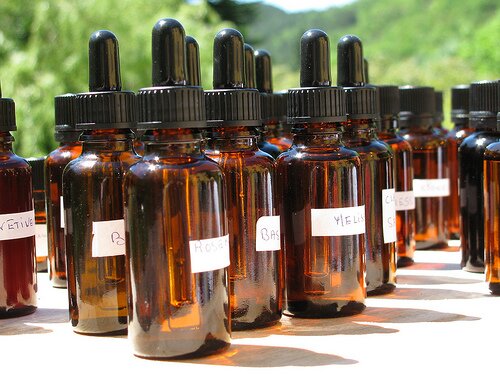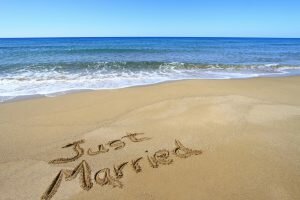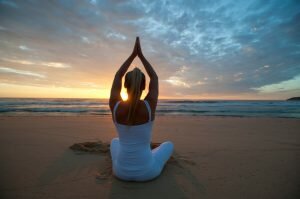GoLearnTo.com features on the Virgin Group’s new VTravelled website today as Maxine Sheppard learns to make her own signature scent on a perfume and beauty products course….
“Oooh yes! That’s really taken you back; what a lovely expression!” Petre Sefton, founder of the Tortue Rouge natural products company beams at me as she wafts a small bottle of spearmint essential oil under my nose.
My eyes are closed and I’m instantly transported to my grandmother’s herb garden, aged about four. The reaction is instant; almost primal. It’s a comforting memory and I’m clearly wearing my heart on my face. It would be hard not to – the nerves involved in smelling are directly connected to the limbic system, the part of the brain that deals with emotions.
It was the last afternoon of my organic cosmetics-making course in the Languedoc region of France and my fellow students and I were making our very own perfume. After a morning spent learning about the ideal structure of a fragrance and stimulating our olfactory receptors with all manner of base, ‘heart’ and ‘head’ notes, we moved to the lab to start blending together our choices. I carefully squeezed a couple of drops of the mint oil into the tiny jar that already contained the essence of my signature scent – rosewood, mandarin and grapefruit – and after a vigorous shake, I removed the lid and sniffed deeply. It wasn’t quite right. The mint, which I’d intended to be nothing more than an intriguing, lingering note in the air as I drifted past, was instead completely overpowering. “It’s a bit unbalanced,” Jenny Gay, homeopath, flower essence expert and our other course leader suggested. “Try one more drop of your heart note. And what else spoke to you?”
What spoke to me was the bergamot, a divine summery essential oil evocative of the Mediterranean, and my outright favourite – but I’d already used it in my face cream and my toner, so I figured I should try something else in the perfume, which just goes to prove how foolish logic can be sometimes. Two extra drops and my scent was perfect. Perfect for me, anyhow.
We’d arrived a couple of days earlier, and by now I was feeling truly galvanized. Daydream scenarios of turning my kitchen into an all-natural skincare emporium were playing out in my head, as I imagined delighting all my friends and family with the rewards of my new-found knowledge. This is what happens when you find yourself in idyllic surroundings, in the company of inspirational people.
Petre Sefton, our softly-spoken yet passionate host, was a successful businesswoman working in publishing in the UK before an extremely serious attack of septicemia left her in incredible pain and covered with violent sores. After seeing one conventional doctor after another to no avail, she was finally recommended the aromatherapist of a close friend. “I was stunned at how quickly I recovered,” she told me. “In a matter of weeks I was back to my old self, and it was all due to a balm that was packed with essential oils.” Petre became fascinated by the healing power of plants and flowers and from then on her life became a mission to share what she learned with others. In 2002 she bought 250 acres of land in the Herault region of Languedoc, an area renowned for its amazing diversity of plant life. In 1593 in Herault’s capital Montpellier, France’s first ever botanical garden was established and was dedicated to the study of medicinal and aromatic herbs. Now Petre grows many of these same herbs herself, to exacting standards – always conserving the therapeutic value of the plants and ensuring that they are genuinely, 100% organic.
Her philosophy underpins everything that Tortue Rouge do. Absolutely nothing superfluous is used in any of their products. It was a revelation to see how simply and easily a pure, totally natural and truly effective face cream could be made. Standing in the sparkling white lab awaiting our first demonstration from Jenny, I was still expecting something technical to take place, despite that morning’s discussion about the unnecessary chemical additives that are present in the vast majority of skincare products – but the whole process took less than three minutes.
A small amount of a favourite base oil, like apricot kernal (for sensitive skin) avocado (great for eczema) or wheatgerm (an antioxidant) is added to some pure aloe vera gel, and frenziedly whipped until cloudy. Then a few drops of essential oils, chosen for your own personal needs, are added to the mix. And that was it. Mine – jojoba oil for dry skin and neroli, orange and bergamot oils, all mood lifters and energisers – was absolutely refreshing and heavenly-scented. It soaked effortlessly into the skin like butter on a crumpet and the smell remained for hours. Petre explained it as “the alchemy of art and science.” It’s not just the ingredients themselves, but how they’re combined. The body and the mind have an innate way of seeking out what they need, if you just trust them to get on with it. And evidently, they don’t need any petrochemicals, parabens or preservatives. I was a happy convert.
L’Alabrena, the old farmhouse-cum-hotel where the course takes place lies in a steeply-sided, deep green valley at the end of a wild orchid-strewn country lane about a ten minute drive from the medieval village of Lunas – approximately one hour from either Montpellier or Beziers airports. Its bedrooms are simple and chic, with exposed stonework and wooden floors and, not surprisingly, plenty of homemade soaps and toiletries in the spacious, mosaic-tiled bathrooms. As well as communal sitting and dining areas there’s also a gravelled terrace and a pool, and a neighbouring gîte which often gets let out to the many pilgrims on their way from Rome to Santiago De Compostela, a well-worn route which passes through this beautiful part of southern France.
Lunas itself is a gorgeously pretty village, and an evening spent sitting outside its small local bar sipping rosé as the sun goes down only adds to the overall feeling of wellbeing. And if you want to offset the wine, you can always walk there. It’s about one leisurely hour from the hotel, and if you get the opportunity to be accompanied by Elizabeth, the local plant expert, then take it. You won’t believe what’s lurking in those hedgerows. In the first five minutes I’d already discovered how to make verrucas disappear (the stalks of greater celandine), relieve insomnia (melissa, or lemon balm) and detox my bloodstream (burdock). Ramsons, a wild relative of chives and otherwise known as bear’s garlic, is a particularly ubiquitous herb around these parts and the small, edible white flowers are a confirmed favourite of the wild boars that roam this valley. We hardly seemed to pass a single plant that didn’t have some medicinal or psychological benefit.
To the northeast, slightly further afield but still easily accessible if you have a car, are the stunning mountains of Cévennes National Park, part of the Massif Central, which rise above the plains of the Languedoc and the Mediterranean. A contrasting landscape of deep valleys, flat plateaus and clear, winding rivers, it’s an ideal place to come and test your knowledge after your course. The aromatic and therapeutic plants, herbs, flowers and shrubs that can be found here make up more than a third of all known French flora. And if that’s not enough you can always come back for more – Soapmaking (which apparently is a lot more technical) and even Introductory and Applied Aromatherapy courses are also on offer. It could be the start of a whole new way of life…
The Make Your Own Organic Cosmetics Course is available through Golearnto.com and costs from £379 per person for four days. The price includes accommodation, food, lessons, recipes to take home with you and all the products that you make on the course. The Organic Beauty Products and Perfume Making Course lasts for six days and costs from £679.
The hotel is easily accessible from either Beziers or Montpellier airports. Ryanair fly to both from the UK. There is no public transport so car hire or a pre-booked transfer is the best option.
Golearnto.com also offer a number of other wellbeing courses, including a variety of yoga options which can be combined with cooking, creative writing, nature walking, digital photography and even surfing. Check their website for more details.
*Please note that this course is no longer available – click here for our full range of <a href=”https://golearnto.com” target=”_blank”>activity and learning holidays</a>*







 Designed by
Designed by